As a fan of visual novels, I hope people are beginning to see that they can be called video games, and that they’re not always about creepily seducing half-naked cat-eared women.
One can hope, at least. 2014 has been a good year for the genre with the release of Sunrider, If My Heart had Wings, and World End Economica. In fact some Japanese console VN’s are starting to see worldwide releases with Xblaze Code: Embryo and Tokyo Twilight Ghost Hunters set to arrive next year.

I’ll say up front that this is an “eroge” game, that is to say there are some sexually suggestive images and themes. The original version not on Steam had full sex scenes, but since Steam doesn’t allow sex games, they were taken out in this version. There is an option to turn H-scenes on in the menu, but all that does is give you an in-game achievement, it doesn’t actually enable nudity or sex scenes. Because we live in a society in which blowing someone’s head off into hundreds of bloody, meaty chunks with a shotgun is okay, but blowing someone’s head isn’t.
Everlasting Summer is a game developed in the quickly expanding Russian game industry, something that shines through in both the visuals and writing. There are several instances where a little box will appear in the top right corner explaining what certain words mean. Perhaps they should have translated those words and phrases fully without the text-box, however words such as “onee-chan” or “kawaii” are prevalent in most Japanese translated media so I can hardly fault them for doing the same with the Russian language.
You play as Semyon, a man with strange dreams who will spend the first ten minutes of the game detailing them in minute detail. He then falls asleep on a bus during winter and wakes up to find himself in a pioneer camp in the middle of summer, and is now a teenager. At first the camp looks empty, but a woman eventually emerges and calls him over. With no knowledge of what happened or what his dreams mean, he has to figure out where he is and how to get home.
From the very onset of the game, its clear Everlasting Summer is determined to drag itself out as long as possible. Actions are indeed louder than words, and instead of actions building up Semyon’s character, we instead have to suffer through endless novel long rants about his dreams, what he’s thinking and feeling. He fits the image of every “emo” high school boy: dark, thinks very lowly of himself, harbors no goals or ambitions, and is always talking in pseudo-psychological tongues. Trust me, I used to be one of those. Imagine Holden from Catcher in the Rye minus the wit and any actual rebellion.
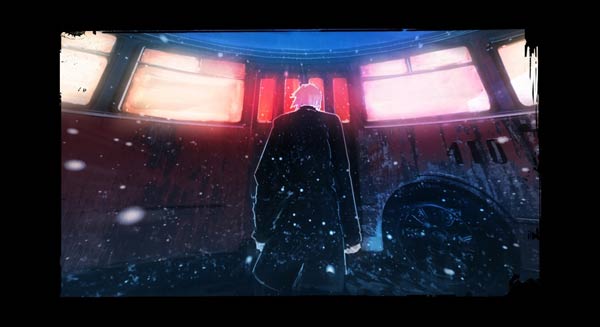
He’s pretty dim as well. The first thing he thinks when he wakes up on that bus is: “Have I been kidnapped? No, I must be dead. … It’s clear, either I’m still alive, or, being dead, you can still feel the pain.” He then gets off the bus and starts walking down the road to go back home. A fairly sensible plan until he stops, starts to ramble about the grass and trees, and for no reason turns around and goes back to the bus. Then, instead of going into the camp, he sits down and starts crying for hours.
The backgrounds are very well done. The art-style is simplistic and also realistic, in what looks almost like a combination of real life aesthetics, anime visuals, and western cartoons. There’s a great shifting of style between them. Some scenes are done in a minimalist style and others are excessively detailed, while still maintaining that cartoony feel. Each background is bright and vibrant, utilizing many different colors and shades. Not all backgrounds are equally displayed either. Some are different sizes and resolutions, while others are frayed around the edges, or have black blotches and holes around the outside of the frame. It’s nice attention to detail.
What I really enjoy is something I’ve never really seen in a visual novel before. On a few occasions, instead of fading to black between scenes like most visual novels, Endless Summer instead uses comic book panels to showcase the environments and the characters. Some panes show one image from multiple angles, and some focus on different areas of one image. It adds a layer of depth to the presentation, however it’s a rare occurrence, happening only at the beginning and end.
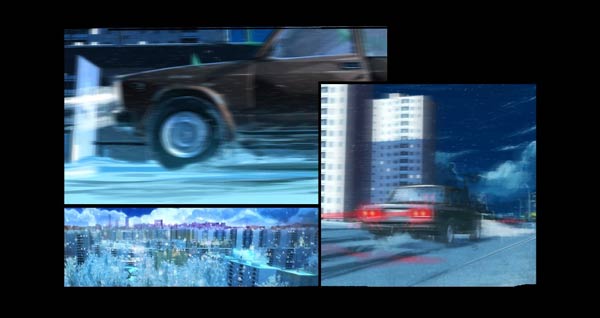
The character designs, however, aren’t quite as great. Their models aren’t as detailed as the backgrounds and don’t look like they belong in the same game. They’re generally uninspired as well, each girl looking like a clone with different hair. They don’t quite look human, and they aren’t totally alien either, striking a perfect balance right in the middle of the uncanny valley. And of course one of the girls is a cat girl.
Endless Summer is a typical harem game. It does nothing new or original in terms of plot, player choice, or characters. It’s the same character archetypes of the genre: cat girl (nekko), a girl who’s angry all the time who grows fond of the protagonist (tsundere), a “perfect angel” with stereotypical good looks and acts like a saint, a shy girl who is shy, and an adventurous underage girl who throws caution to the wind and inevitably sets something on fire.
The player can make decisions throughout the course of the story, decisions that will influence the plot, i.e. which girl you end up sticking your hotdog in. The “romance” consists of the tried and true formula of “be nice to one of the girls and they will have sex with you because that’s how relationships work” that so many of these games employ.
The harem of cliché’s do their intended jobs, and that is supposed to sound creepy as it does. They carry out their archetypes, their one feature that defines them complete with silly anime expressions, and occasionally get serious and talk about their feelings whenever it’s about time to start sexy time because the player inserted enough kindness coins. I don’t think the writer cared about them as characters so much, more as romancable plot lubrication, designed to look good and keep the story moving for our good friend Semyon.
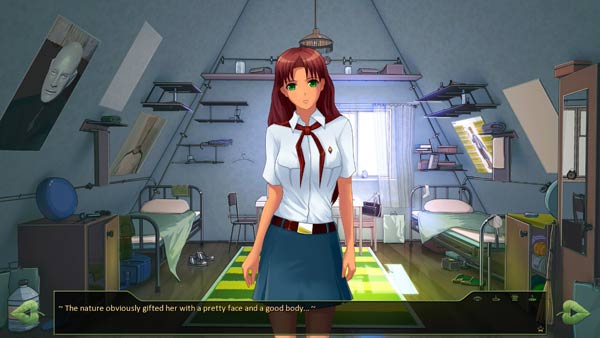
From there, all the “necessary” plot points are hit upon. Run into a girl who’s changing, join a club, meet the sexy nurse, up skirt panty shot, protagonist falls down on top of one of the girls and they stare at each other on the floor, obligatory beach section; the list goes on.
As with any visual novel there are multiple consclusions. I can’t vouch for the other endings, but the one I got would make the finale of Lost seem straightforward. The in-game achievement said I got the “Forever Alone” ending, while the Steam achievement said I got the “Semyon Good Ending”. The narrative also said something along the lines of “most stories have a happy ending. But not all.” It’s never explained how Semyon ended up at the camp, how he got younger, how he escaped, what those dreams were about, or who it was that contacted you at the end.
According to the walk-through, this is a visual novel in which you have to finish the game multiple times, seven in this case ending up with a different girl each time, to get the “true ending”. This is a common occurrence in the genre, most notably with Little Busters in which you have to play it seven times, ten depending on whether or not you have the version with the extra characters. You don’t need me to tell you that’s a horrible idea, do you? Well I’m going to anyway, that’s a horrible idea. No matter how good your game is, no one wants to play the same content that many times.
Adding a much needed layer of depth is the implantation of a card game. However the developers manage to bungle this as well. The character explaining the rules said it was like poker, although he didn’t quantify what “like poker” meant. There is a proper tutorial, and it does explain the mechanics, but that doesn’t explain the end game either.
Here’s how it’s played: there are a set number of cards laid out before you and your opponent. Each player takes turn pointing out what card they want to take from their opponent’s hand. That player can shuffle their hand as many as two times before a card is taken. After three turns of this, whoever has the highest poker hand wins. The game also just assumes you know what poker hands are without explaining them.
The best way I can describe this game is to say it’s a matching game, but you only get to flip one card at a time instead of two. Since there’s no drawing from a deck, the game depends entirely on what cards you’re dealt. If you’re dealt a good hand, it’s too easy to see how your opponent shuffled their hand and you can just get that same card back. If you’ve got a crap hand than all you can do is randomly select cards from your opponent’s hand and hope you get something. Ultimately it doesn’t matter, because the game was played once (there’s a tournament with three games, and you could lose any one of them) and it was never brought up again; so much for variety.

The music is standard visual novel fare. It’s upbeat when it needs to be, scary when it needs to be, and goofy when it doesn’t. Amusingly, the Holographic Princess Hatsune Miku lends her voice to one of the tracks. Unfortunately her role is relegated to saying “la” in of on the tracks over and over again. Her name and image are used as well, which is probably copyright infringement.

Most criminally of all there are several typos, grammatical errors, and stilted sentences. This can be accredited to English not being the developer’s first language, but that’s no an excuse. To their credit, they have acknowledged this in the Steam forum and are working on a revision.
If there’s one word to describe Everlasting Summer, it’s uninspired. It tries to be a deep coming-of-age tale but fluffy writing, a weak and stupid protagonist, and unambitious design hold it back. The element of mystery could have added something interesting if the game didn’t forget about it most of the time. That being said, I’ve certainly played worse. While it’s as bland as a blank sheet of paper it’s at least well put together, excluding the typos. I only played it once, so I didn’t get the “true ending”, and maybe then I would have seen a more complex story, but I’m not going through five more bland, meaningless stories to get to the real one. When there are better free visual novels out there like Sunrider and Katawa Shoujo, I can’t really recommend this one.
Developer: Soviet Games
Publisher: Soviet Games
Platform: PC
Release Date: November 19, 2014
Price: Free




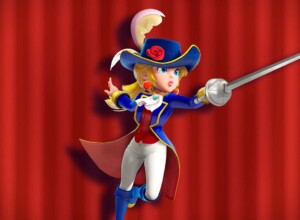

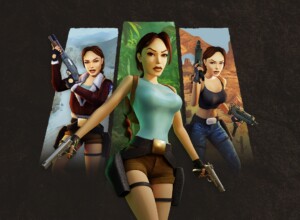
You should actually read and and pay attention when dealing with the visual novels instead of uninspiredlly clicking through in bored search of some cues for your review and randomly choosing the worst options (as you did to reach the ending you got).
Try it and you might find out how the single storylines are interwoven in a pretty unique way with the highlights being the storylines of Miku (playable after at least one “good” ending) and Yulya (playable after all 5 “good” endings + Miku). The stereoty character are so by design and also that gets clear when you know the whole story. The concept of replaying / rereading is built in and all makes sense and falls together when you play the Yulya route and after that the Free DLC which is included.
Although I have to concede that the author(s) got carried away in far too many words in some places it is more than made up for by the story and setting as they unfold through the alternative routes. Play the Miku route at least and then re-review, please.
about russian game industry… this game was made for free by enthusiasts from russian imageboards, like katawa shoujo